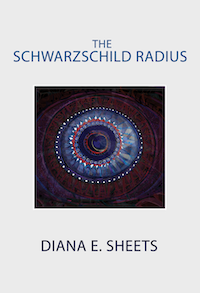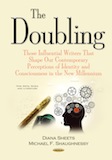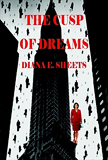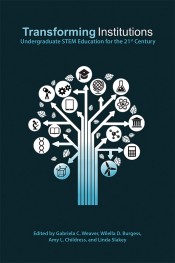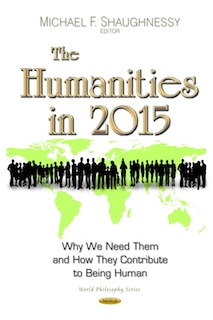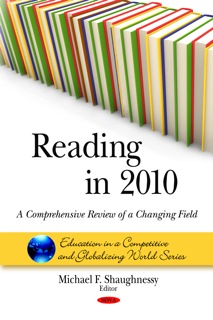The Great Books and Cultural Identity: The Rise and Fall of Western Memory and Its Implications for Our Time, Part I
This Great Books essay will be serialized in three parts. It is available in an edited collection Reading in 2010; A Comprehensive Review of a Changing Field, edited by Michael F. Shaughnessy and published in 2010 by Nova Science Publishers. A “read only” version of this essay may be downloaded at http://www.novapublishers.com/catalog/product_info.php?products_id=11835. Scroll down to essay 10, click on the title, and then click below the PDF icon. All copyright permissions must be obtained from the publisher.
Author:
English and History Departments,
Dedicated to Alvin B. Kernan
Whose scholarship celebrated the Western Canon
Abstract
The great books have encapsulated the historical and cultural foundations of modern Western Civilization since the age of Gutenberg, although the works that informed the Canon extend back to the Greco-Roman Empire and forward beyond the 1969 American “manned” moon landing. This heritage survived a challenge in the years preceding World War I only to be undermined by the “Culture Wars” that began in the 1960’s and climaxed by the early 1990’s. As this essay will demonstrate, the Great Books movement was ultimately felled by a triumvirate of false virtues: cultural relativism, social justice, and feminization, which served to replace excellence with a child-centric perspective founded on empathy. Enter the new medium, the Internet, with its emphasis on image and sound supplemented by some rudimentary text, and a “secondary orality” is born where the narcissistic self has no social or cultural foundation with which to navigate the world of ideas. Hence consciousness dims, the voices that speak within are misinterpreted as those of deities, and our civilization flounders. Thus ensues a devolutionary spiral with catastrophic consequences. Today, we bear witness to this cultural demise as we stand upon the remnants of our desecrated civilization.
A Brief History of the Great Books
It was once thought that the purpose of our educational institutions was to transmit the great ideas, contained in our Western Canon, from one generation to the next. That “Imaginary Library”, as Alvin B. Kernan has characterized it, was viewed by the poet Shelley as the sum total of cultural knowledge manifested as “that great poem, which all poets, like the cooperating thoughts of one great mind, have built up since the beginning of the world” (The Imaginary Library, Princeton University Press, 1982, p. 8). From the Middle Ages through the late eighteenth century, most educated Westerners, as historian A. O. Lovejoy demonstrated in The Great Chain of Being: A Study of the History of an Idea, viewed the world—and by inference its fundamental ideas—as governed by innumerable hierarchical strands from the lowest of low to the highest of high that united to form one inexorable connection (The Great Chain of Being: A Study of the History of an Idea, Harvard University Press, 1936). Thus, from Isaac Newton’s perspective his path-breaking discoveries could be characterized as the culmination of advances achieved by scientists through the ages: “If I have seen further [than others], it is by standing on the shoulders of giants” (as cited in David R. Topper, Quirky Sides of Scientists: True Tales of Ingenuity and Error from Physics and Astronomy, Springer, 2007, p. 141).
But the evaluation of this compendium of human knowledge—to say nothing of the means of conveyance—has long been subject to debate within our academic institutions. Until the 1880’s American universities maintained a classical curriculum emphasizing Greek, Latin, rhetoric, philosophy, history, as well as mathematics, physics, and chemistry. However, in 1899 the president of Harvard University, Charles W. Eliot, introduced changes that resulted in an entirely elective curriculum that subsequently set the standards for course offerings by other universities (Alex Beam, A Great Idea at the Time: The Rise, Fall, and Curious Afterlife of the Great Books, PublicAffairs, 2008). Nevertheless, while speaking to an audience of workers in 1909, Elliot extolled the virtues of a fifty volume, “five-foot shelf” that would provide the foundations for a great education based on a minimum of fifteen minutes of daily reading. In 1910 Elliot’s Harvard Classics were published by P.F. Collier. Over the course of twenty years, 350,000 sets were sold (Adam Kirsch, “The ‘Five-foot Shelf’ Reconsidered,” Harvard Magazine, 104, November-December, 2001).
The selections included in the Harvard Classics were shaped by personal preferences and societal norms. Eliot, a chemist by training, chose unabridged texts. Scientific selections were based on their accessibility to humanists. While the set included Don Quixote, Stories from the Arabian Nights, and Goethe’s Faust, overall the literary choices were constrained by Eliot’s decision to exclude nineteenth-century novels. This omission was partially rectified in 1917 with the addition of the Harvard Classics Shelf of Fiction, a 20-volume supplement. In the area of philosophy, there were also gaps: nothing by Aristotle and Aquinas, Leibniz and Hegel or, for that matter, Kierkegaard, Marx, Schopenhauer, Nietzsche, and Freud. Speculative metaphysics was noticeably absent as were epistemology and theology (Kirsch).
Nevertheless, Elliot’s “five-foot shelf” marked the beginning of a twentieth century American “conversation” regarding what should be included in the “Imaginary Library” that would enable aspirational Americans—with or without a college education—to become truly educated.
This “conversation” was renewed by John Erskine, a professor of Elizabethan poetry at
Mortimer Adler was one of the first students in this undergraduate honors program. In 1923 he teamed up with Mark Van Doren to teach the Great Books and subsequently joined the
Hutchins and Adler began teaching a Great Books seminar in 1930 as part of an undergraduate honors program modeled after the one developed by John Erskine at
The Great Books phenomenon was so prevalent by the 1940’s that a study undertaken by Harvard in 1945, as historian Timothy Cross noted, recommended that core requirements there be reinstituted and that these emphasize “‛the heritage of Western Civilization and endow all students with a common intellectual background’” (as cited in Beam, p. 68). Indeed by 1946 there were 5,000 Great Books programs formed throughout the
But the most significant endeavor to influence the content of the “Imaginary Library” and shape the reading habits of Americans was the publication in 1952 of the Great Books of the Western World, a fifty-four volume set that was two inches longer and four volumes greater than Harvard’s “five-foot shelf”. The Great Books of the Western World contained 443 works by seventy-four white men, the contents of which encapsulated 102 Great Ideas within its 32,000 pages. It was the brainchild of William Benton, publisher and publicist, and Mortimer Adler, its Associate Editor, who oversaw the project from inception to completion. Robert Hutchins served as the editor in chief. Since its initial publication in 1952, the Great Books of the Western World has sold one million sets, each costing hundreds of dollars (Beam).
The impact of the Great Books movement was most prevalent between the late 1940’s and the early 1960’s. The Great Books Foundation suggests that as many as 50,000 Americans were enrolled in groups in 1947. By the 1950’s these numbers dropped to approximately 25,000. They climbed back to about 47,000 in 1961 in conjunction with a major advertising campaign by Encyclopedia Britannica to promote the Great Books of the Western World to paying subscribers. Unit sales were greatest in 1961, although the greatest profitability was achieved seven years later. Nonetheless, by the 1970’s sales had dropped significantly. Even a revised edition in 1990 that included texts by women failed to revive flagging readership (Beam).
So we are compelled to ask four questions: “What did the Great Books of the Western World encompass?”; “Why was the idea initially successful?”; “How did the decline in Enlightenment values pave the way for the rejection of the Great Books?”; and, finally, “What might be the consequences of our failure to understand the foundations of Western Civilization?”
Contents and Goals of the Great Books
The first volume of the Great Books of the Western World, The Great Conversation: The Substance of a Liberal Education, is an extended essay by Robert Hutchins. Its purpose is to elucidate the importance of the classic texts that have defined our Western heritage and to suggest how these ideas may provide readers with an understanding of ourselves and our world. As Hutchins notes in the preface, “We are as concerned as anybody else at the headlong plunge into the abyss that Western Civilization seems to be taking. We believe that the voices that may recall the West to sanity are those which have taken part in the Great Conversation” (1988, p. xii, initially published in 1952).
The Great Books, Hutchins suggests, is not a panacea, although these works illuminate the causes of our difficulties. Nor does he believe these classic texts are the only ones worth reading. Hutchins acknowledges that there may be “errors of selection” and that revisions may occur “in the light of the criticism it will receive” (Hutchins, p. xiv). The project, he explains, was born out of the realization that the “great books have disappeared, or almost disappeared, from American education” (Hutchins, p. xiv). Hutchins insists “we regard this disappearance as an aberration, and not an indication of progress” (Hutchins, p. xiv). The Great Books set, he suggests, is offered in the belief that the understanding obtained by reading these works will enable us to gain insight into the “history, politics, morals, and economics” (Hutchins, p. xiv) governing our society. Reading the Great Books establishes that “habit of mind” critical to assessing and reaching “a valid judgment” on any given issue (Hutchins, p. xiv).
Above all, Hutchins argues, the Great Books of the Western World is intended as a means of engaging Americans in the “Great Conversation” that can only come with a nation united in a common understanding of shared values. The knowledge gleaned from the Great Books permits us to understand and take the appropriate action necessary to nurture a vibrant democracy. The assumption is that the Great Books should be read by all Americans, young and old, not just individuals who attend elite colleges and universities. For the wisdom obtained from the Great Books will be invaluable for our nation and its citizens (Hutchins).
What books are included in the first edition of the Great Books of the Western World? They consist of many of the greatest writings known to Western Civilization. To read them is to become steeped in a classical education: Homer’s, The Iliad and The Odyssey, works by Aeschylus, Sophocles, Euripides, Aristophanes, Herodotus, and Thucydides, and Plato, as well as Aristotle and Plutarch, Tacitus, Plotinus, St. Augustine, St. Thomas Aquinas, Machiavelli, Hobbes, Montaigne, Sir Francis Bacon, Descartes, Locke, Hume, Montesquieu, and Rousseau. Within that first edition are works by Adam Smith, Edward Gibbon, Kant, Hegel, and Marx and Engles whose ideas form the basis for modern economic, historic, philosophical, and political thought. The set includes foundational American texts: The Declaration of Independence, Articles of Confederation, The Constitution of the United Sates, and The Federalist. Literary classics are represented: Alighieri’s The Divine Comedy, Chaucer’s The Canterbury Tales, Rabelais’s Gargantua and Pantagruel, as well as many of Shakespeare’s plays and sonnets, Cervantes’ Don Quixote, and
Much of the opposition to the Great Books has been well publicized. Hutchins and Adler were accused of “Aristotelianism,” “Thomism”—an obsession with Thomas Aquinas— “medievalism”, as well as an unhealthy obsession with metaphysics (Mortimer J. Adler, Philosopher at Large: An Intellectual Autobiography, 1902-1976, Macmillan Publishing Co., Inc, 1977). Critics objected to the quasi-religious character of the Great Books movement and the dubious prospect of amateur forays by “novice” readers into the academic sanctuary of intellectual ideas. As with the Harvard Classics, there was a great deal of debate over what was included and excluded from the Canon (Beam). Complaints were made about the “cultish” nature of the enterprise (Allan Bloom, The Closing of the American Mind: How Higher Education Has Failed Democracy and Impoverished the Souls of Today’s Students, Simon and Schuster, 1987). Intellectuals despaired about the “middle brow” character of reading groups and book clubs (Joan Shelley Rubin, The Making of Middlebrow Culture, The University of North Carolina Press, 1992). Critics objected to the use of older translations, some of which were of marginal quality. Adler’s two-volume index, referred to as the Syntopicon—with 2,428 pages with 3,000 subtopics, and 163,000 entries—proved cumbersome. Many readers longed for introductory explanations and footnotes to elucidate the texts (Beam).
There were debates about the inclusion and relevance of science texts among the Great Books of the Western World. Joseph Schwab, a chemistry professor, was the only scientist represented on the selection committee. Two other members, Lionel Trilling and John Erskine, objected to the inclusion of scientific writings while even Hutchins acknowledged he never intended to read works by Ptolemy, Copernicus, and Kepler, although they were within the fifty-four volume set (Beam).
Despite this antipathy to science, some foundational scientific texts were included if only because it is difficult to conceive of the “Great Conversation” without a discussion of The Thirteen Books of Euclid’s Elements or On the Sphere and Cylinder by Archimedes or Dialogues Concerning the Two New Sciences by Galileo or Mathematical Principles of Natural Philosophy by Newton or Analytical Theory of Heat by Fourier or The Origin of Species by Darwin. Missing from the Great Books were works related to the seismic revolution in science from the mid-nineteenth to the early twentieth century: electromagnetism, thermodynamics, relativity, and quantum mechanics while cybernetics and genetics, which were only in the early stages of discovery, were, understandably, absent. As with any canon the Great Books is subject to modification. Among those scientific works that today might be considered less worthy of inclusion are the writings of William Gilbert, William Harvey, and Christiaan Huygens.
Initial Response to the Great Books
Whatever the perceived defects, as stated earlier, Encyclopedia Britannica sold one million sets of the Great Books (Beam). Why did so many Americans buy them? The answer is remarkably simple: the cultural norms of the 1950’s and early 1960’s encouraged aspirational values. Americans hungered to be educated. They understood the importance of reading as a means for obtaining knowledge that would improve the quality of their lives while, possibly, opening the door to economic opportunity. Consider, for instance, the significance Hutchins imputes to the “Great Conversation” in enabling Americans to live meaningful and productive lives.
The aim of liberal education is human excellence, both private and public (for man is a political animal). Its object is the excellence of man as man and man as citizen. It regards man as an end, not as a means; and it regards the ends of life, and not the means to it. For this reason it is the education of free men. . . . The liberally educated man understands . . . the differences and connections between poetry and history, science and philosophy, theoretical and practical science. . . . The liberally educated man . . . knows what is meant by soul, state, God, beauty. . . . The liberally educated man is at home in the world of ideas and in the world of practical affairs, too, because he understands the relation of the two. (Hutchins, pp. 3-4)
Indeed, the ideas conveyed by Hutchins in The Great Conversation are inexorably linked to the worldview expressed by William H. Whyte in The Organization Man (Simon and Schuster, Inc., 1956). Americans in the 1950’s and early sixties belonged to civil, social, and political organizations. Institutions were central to American life: the company, the university, the family, marriage, and the social networks of local communities. Shared norms shaped the nature of these interactions. It was understood that the “self” necessarily took backstage to the nurturing of meaningful associations. It was a “manly” world in which the corporation was hierarchically structured, competition in service to excellence was a given, and there was an expectation of financial rewards based on bona fide performance. Success, when it was achieved, was obtained through initiative, hard work, and abiding by social dictates.
Certainly, this culture of excellence based on talent and merit had its defects. Women who wanted education and professional jobs were often discouraged or prevented from competing with men. Members of ethnic and socially marginalized communities were frequently denied opportunity and promotions. These obstacles and restrictions limited the ability of all Americans to partake of not only the “Great Conversation” but also the economic possibilities afforded by competitive excellence.
Despite these impediments there was, nevertheless, social mobility. Education offered the best means to improve one’s economic or social status. Not everyone obtained a college degree. But through encyclopedias, book-of-the-month clubs, newspapers, weekly magazines, and discussion groups, people obtained critical information necessary to gain some understanding of their world. This knowledge became the engine of social communication and economic opportunity. Personal gratification was deferred: parents saved their money to send their children to school while their sons and daughters were encouraged to work hard to set aside funds for long-term objectives. The society exercised judgments about the values and standards that would prevail. These norms were observed at work, home, and in the community, thereby suppressing identity politics and potentially deviant social practices.


